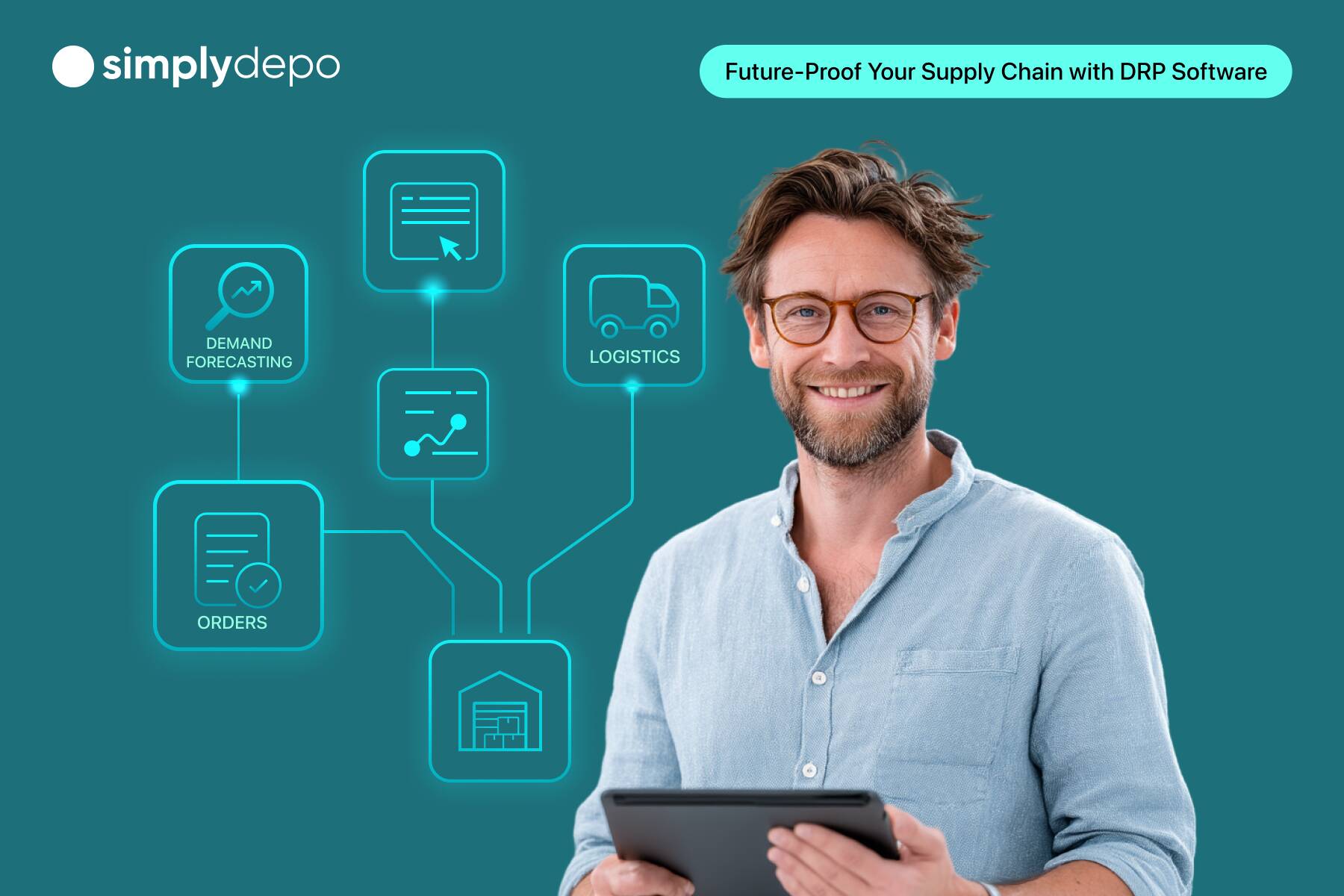In a world of unpredictable disruptions, rising consumer demands, and increasing operational complexity, supply chains are under more pressure than ever. From pandemic-related shortages to shifting geopolitical dynamics and new sustainability regulations, distribution leaders are navigating a perfect storm of volatility.
That’s where Distribution Resource Planning (DRP) software comes in. As we head into 2025, DRP tools are becoming mission-critical for supply chain professionals who need real-time visibility, smarter planning, and the agility to respond fast.
Now, we’ll break down what DRP software is, why it matters more than ever, the trends shaping its evolution, and how to choose the right solution to stay ahead.
What is Distribution Resource Planning (DRP) Software?
Distribution Resource Planning software is a digital solution that helps businesses manage and optimize the flow of goods across their distribution network. It ensures the right products are in the right place, at the right time—while minimizing waste and cost.
Think of it as a smart layer between demand forecasting, inventory planning, and logistics. Key features typically include:
- Demand forecasting based on historical and real-time data
- Inventory optimization to prevent overstocks and stockouts
- Distribution scheduling across warehouses, suppliers, and retailers
- Replenishment planning that automates restocking and reduces manual errors
How is DRP different from ERP or MRP?
While ERP (Enterprise Resource Planning) and MRP (Material Requirements Planning) focus more on internal processes like finance and production, DRP specifically targets outbound supply chain operations—planning how products move from distribution centers to end customers or retail shelves.
Why Distribution Resource Planning Matters More Than Ever in 2025
In the past, long-term planning and periodic reviews were enough. But the current environment demands constant adaptation. Here’s why DRP has become indispensable:
- Disruptions are the new normal. Whether it’s inflation, war, weather, or labor shortages, external shocks are hitting supply chains more frequently—and harder.
- Customers want faster fulfillment and more options. Real-time stock visibility and rapid response are now table stakes.
- Overstocks and stockouts are expensive. Excess inventory ties up capital; shortages kill sales and erode customer loyalty.
- Compliance and sustainability standards are rising. Companies must now track emissions, source ethically, and reduce waste—all while staying competitive.
Without the right planning tools, businesses risk falling behind.
Future Trends Shaping Distribution Planning
Distribution Resource Planning isn’t just about reacting to demand—it’s about predicting and shaping it. Here are key trends transforming DRP software in 2025:
- AI-powered forecasting and predictive analytics. Smarter algorithms improve forecast accuracy and help simulate what-if scenarios for better decision-making.
- IoT and real-time data integration. Sensors and smart devices allow for live tracking of inventory, temperature, and transit conditions.
- Automation and decision intelligence. Autonomous restocking, route optimization, and exception handling streamline operations and reduce manual work.
- Cloud-based distribution resource planning software for distributed teams. Cloud-native platforms offer flexibility, faster deployments, and better collaboration across global operations.
- Sustainability and circular supply chains. Modern distribution resource planning software helps track carbon emissions, reduce returns, and build more environmentally responsible systems.
Key Benefits of Distribution Resource Planning Software for retail business
Implementing a tech-forward distribution resource planning solution unlocks significant advantages:
- Improved forecasting accuracy reduces surprises and boosts confidence in planning.
- Lower inventory carrying costs by minimizing excess stock.
- Streamlined logistics and reduced transportation spending through smarter route and distribution planning.
- Better alignment between supply, sales, and operations teams.
- Higher on-shelf availability improves customer satisfaction and sales performance.
- Faster response to disruptions, thanks to scenario planning and real-time alerts.
What to Look for in a Distribution Resource Planning software in 2025
Choosing the right Distribution Resource Planning software can feel overwhelming, but here are key capabilities to prioritize:
- ✅ Mobile accessibility for field reps and warehouse managers on the go
- ✅ Easy integration with your existing ERP, CRM, POS, or warehouse systems
- ✅ Scalable architecture to support growth across regions and channels
- ✅ User-friendly dashboards for clear visibility and decision-making
- ✅ Real-time analytics and alerts to respond quickly and proactively
Industry Example: Distribution Resource Planning in Action
Imagine a mid-sized brand struggling with inconsistent product availability across retail partners. After implementing a cloud-based distribution resource planning platform like SimplyDepo, they:
- Improved forecast accuracy by 30%
- Reduced stockouts by 50%
- Cut logistics costs by 18%
- Streamlined collaboration between field reps, planners, and supply chain managers
The result? Happier retailers, better sales performance, and a stronger bottom line.
In today’s fast-paced landscape, distribution planning isn’t just an operational task—it’s a strategic differentiator. Investing in distribution resource planning software equips your business to navigate uncertainty, meet rising expectations, and drive growth.
📈 Want to see what distribution resource planning software can do for your business?
Explore SimplyDepo’s tools or request a free demo to get started.
Prefer a deeper dive? Download our guide to implementing DRP software in 2025
The future of distribution is already here. Make sure your systems are ready.
Boost Sales.
Cut Manual Work.
Streamline ordering, routing, and retail execution — while giving every rep the tools to grow accounts faster.
-
+15h
Save weekly
per rep -
93%
Increase
buyer retention -
24%
Increase
in retail sales

